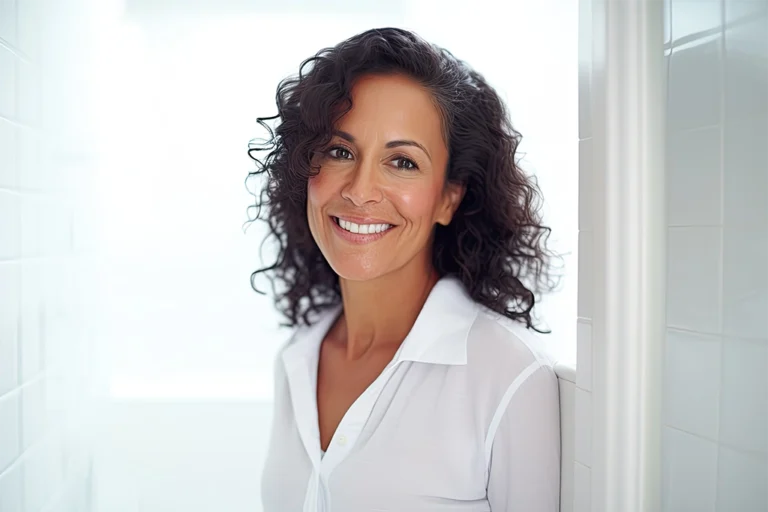A 3D mammogram can literally save your life. Every woman in the United States has a 1 in 8 (13%) chance of developing breast cancer. Early detection of breast cancer is crucial for a positive outcome. If you and your medical provider believe you might have breast cancer, the first step may be for you to have a 3D mammogram.
Understanding 3D Mammograms
Before you get a 3D mammogram, it will be helpful to you to understand the procedure, how it works, and its benefits.
What is 3D mammography, and how does it differ from traditional mammography?
A 3D mammogram, or tomosynthesis, is a type of breast imaging that creates a three-dimensional view of the breast tissue. It can provide more detailed and accurate pictures than traditional 2D mammograms, helping medical providers to view the breast tissue in thin layers, and making it easier to detect small tumors or abnormalities that could be cancerous.
Why is 3D mammography considered more effective for your breast cancer screening?
3D mammogram technology allows radiologists to move and enlarge images of the breast to get a better view of any area of possible concern. A 3D mammogram improves the detection of smaller breast cancers earlier and provides greater accuracy in distinguishing tumor size and location, thus improving treatment options and outcomes.
Compared to traditional 2D mammograms, 3D mammograms reduce the chances of false positives or false negatives. By capturing more images, medical providers are better able to identify cancers or other abnormalities that may be hidden in overlapping breast tissue.
Overall, 3D mammography improves the accuracy of breast cancer screening and helps medical providers identify tumors at an early stage, leading to earlier detection, better treatment options, and potentially improved outcomes for patients.
Who is a good candidate for a 3D mammogram?
Multiple guideline recommendations support annual screening 3D mammograms for women starting at age 40. Your breast tissue can change quickly over time, so it is important to have year-over-year comparisons to monitor any subtle changes.
How 3D mammography detects breast cancer
Before you get any imaging study, it is helpful to have an understanding of the procedure and how it works. Here’s how 3D mammography works.
How exactly does a 3D mammogram find possible breast cancer?
In 3D mammography, an X-ray moves in an arc over the breast, taking multiple pictures of the breast from different angles. These three-dimensional pictures are then rendered by a computer into thin, one-millimeter images, making it easier for the radiologist to see tumors. The improved visualization can reduce false positives and enhance the early detection of breast cancer.
In what ways does 3D imaging help my provider detect breast cancer?
Digital breast tomosynthesis (3D mammography) has become a best practice in women’s health for breast cancer-detecting technology. It is the next evolution of digital mammography, producing 3D images that allow breast tissue to be viewed in individual segments. This allows doctors to evaluate glandular tissue in greater detail, which benefits women with dense breast tissue.
What are the limitations of 3D mammography that I should know about?
Although 3D mammography does use X-rays in its operation, there is minimal risk of radiation from a 3D mammogram, and the benefits most certainly outweigh any risks. The radiation dose for a 3D mammogram can vary but may be slightly higher than a 2D mammogram. However, these dosages are still well within FDA-approved safety levels.
What to expect during your 3D mammogram
3D mammography can seem a little forbidding to some people. So it’s a good thing to know what to expect during your procedure and prepare yourself accordingly.
What preparations do I need before my 3D mammogram?
It is a good idea to arrive at least 15 minutes prior to your appointment. Avoid using deodorants, powders, or moisturizers on the day of the mammogram (as these usually contain substances that may appear on the X-ray as white spots), and schedule the mammogram when your breasts are least tender (ideally one week after your menstrual cycle).
Wear a casual and comfortable outfit like a loose skirt or pants, so that you’ll just need to remove your top and bra for the mammogram. Discuss any recent changes or issues, if any, in your breasts with the technologist before the start of your mammogram. There is no need to fast before a 3D mammogram. You should also take with you proof of identification, such as a driver’s license or government-issued ID card, and any health insurance information you may have.
What should I expect during my 3D mammogram appointment?
If you’re nervous about your 3D mammogram, whether it’s your first or not, that is perfectly understandable. Remember, your mammogram is one part of your healthcare routine—just like a checkup or dental cleaning. It is very rare to get called back after your mammogram, and also that it is even rarer for that callback to result in a cancer diagnosis.
Don’t forget to ask questions, the better informed you are, the fewer potential issues can concern you. If you have a concern about pain, take ibuprofen or Advil ahead of your appointment. Tell the technologist that you’re nervous. They’ll look out for you and do their best to relieve any discomfort you may have.
You will be positioned in front of a 3D mammogram machine and your breasts will be held in place by two curved compression plates. These plates may cause discomfort, but only briefly. When you are ready for the process to begin, the technologist will start the machine. The machine will move over your chest in an arc. The study will be over before you know it. Afterwards, treat yourself to a reward, you’ve earned it.
How is my comfort and safety ensured during a 3D mammogram?
With 3D mammography, it’s the machine that moves. It rotates in an arc around the compressed breast, capturing multiple images from different angles. So only one compression per breast is required. For some women, this is a more comfortable experience. If you are concerned about your safety, peak with the technologist before the study starts. She will answer all your questions and give you a better comfort level about what is going to happen.
Reading your 3D mammogram results
Your OB/GYN or primary care doctor will explain the results of your mammogram with you, and if there are any concerns or anomalies, will guide you through the next steps, if needed.
How can I understand the results of my 3D mammogram?
Radiologists in the United States and some other countries use the Breast Imaging Reporting and Database System, or BI-RADS, to report the findings of mammograms. The American College of Radiology (ACR) created this system to provide one way for all radiologists to categorize their findings and create a follow-up action plan. Talk to your doctor about what category your result falls into and what follow-up plan he or she recommends.
What happens if my mammogram detects anomalies or possible signs of breast cancer?
If your mammogram does show something abnormal, you’ll need follow-up studies to check whether or not the finding is breast cancer. Keep in mind, most abnormal findings on a mammogram are not breast cancer. For most women, follow-up studies” will show normal breast tissue. Fortunately, the majority of women who need follow-up after an abnormal mammogram do not have breast cancer. Most follow-up studies reveal benign conditions. Only a small percentage of women with an abnormal mammogram will need a biopsy, and most of these biopsies will find no evidence of cancer.
How should I follow up with my provider after my imaging appointment?
If follow-up studies or appointments are needed, your doctor should contact you for next steps and when to schedule. If you are concerned about this, don’t wait for your doctor, reach out to them first. When it comes to your health, be an active driver.
How to schedule an appointment with us
Our goal is to offer you and your doctor the most informative results possible, and we make it easy for you to get an appointment.
With numerous locations across South Jersey, you’ll find us conveniently located near major highways and key bridges in the region. Select locations offer evening and weekend hours as well as same-day and next-day appointments.
We’ll ensure the entire scheduling process is as effortless as possible for you. Above all, we are here to help you.
Reach out to us at any of the following locations to book an appointment:
- Cherry Hill Office – Cherry Hill, NJ
- Haddonfield Office – Haddonfield, NJ
- Marlton (Greentree) Office – Marlton, NJ
- Moorestown Office – Moorestown, NJ
- Turnersville Office – Turnersville, NJ
- West Deptford Office – West Deptford, NJ
- Willingboro Office – Willingboro, NJ
- Women’s Center at Cross Keys – Sewell, NJ
- Women’s Center at Medford – Medford, NJ
- Women’s Center at Mount Laurel – Mount Laurel, NJ
- Women’s Center at Voorhees – Voorhees Township, NJ
Learn more about the board-certified, subspecialized radiologists who read, analyze and interpret the findings here at SJRA.
Frequently Asked Questions
3D mammography captures multiple breast images to create a detailed 3D picture, offering more clarity and detail than traditional 2D mammograms.
3D mammography is more effective because it provides detailed images, reducing false positives and improving the detection of breast cancer.
All women starting at age 40 should get an annual screening mammogram. For women with a higher risk of breast cancer, your doctor may recommend starting earlier at age 35.
A 3D mammogram captures images from different angles to create a layered view, allowing for the detection of small tumors that may be hidden in traditional scans.
Avoid using deodorants or powders before the appointment, wear comfortable clothing, and schedule the test after your menstrual cycle to reduce breast sensitivity.
Expect a similar process to a traditional mammogram but with the machine taking multiple images from different angles.
Your doctor will explain the results, focusing on areas of concern or anomalies, and guide you through the next steps if needed.
If anomalies are detected, your doctor may recommend additional imaging or a biopsy to further investigate the findings.



